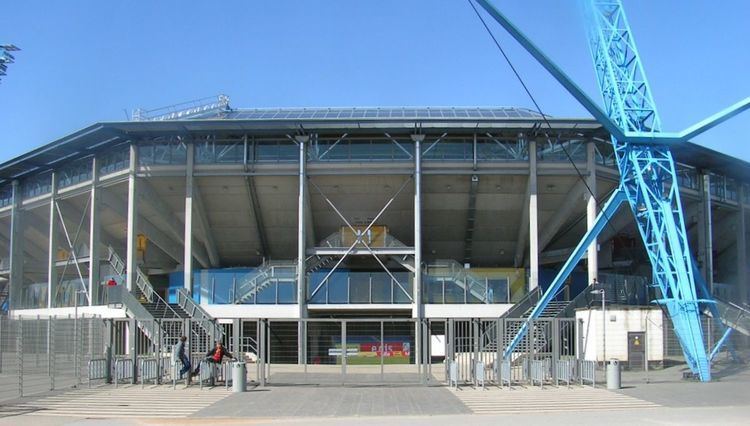Full name Ostseestadion Opened 4 August 2001 | Location Rostock, MV, Germany Phone +49 381 3770127 | |
 | ||
Former names Ostseestadion (1954-2007)DKB-Arena (2007-2015) Owner Ostseestadion GmbH & Co. KG Operator Ostseestadion GmbH & Co. KG Capacity 17,000 (1954)25,500 (1991 expansion)29,000 (2001 expansion)25,000 (seating) Address Kopernikusstraße 17, 18057 Rostock, Germany Similar Stadion der Freundschaft, MSV‑Arena, Ruhrstadion, Benteler Arena, Bielefelder Alm | ||
Bericht ber die geschichte des ostseestadion
The Ostseestadion, previously known as DKB-Arena, is the home stadium of F.C. Hansa Rostock, a German football club, located in the city of Rostock.
Contents
"Ostseestadion" translates in English to "Baltic Sea Stadium", and is named after the Baltic Sea, whose coast Rostock lies upon. Ostseestadion is the original name of the stadium, but on 2 July 2007, Hansa Rostock sold the naming rights for the following 10 years to Deutsche Kreditbank (DKB), hence the new official name became "DKB Arena". In 2015, the club announced that the stadium was to regain its original name, and that the DKB had allowed an early renamning of the stadium and agreed to end the naming contract in advance.
Location
The Ostseestadion is located in the German city of Rostock in the state of Mecklenburg-Vorpommern. Within Rostock, it is situated not far from the city centre in the Hansaviertel part of town near several hospitals of the University of Rostock and a small forest called Barnstorfer Wald'. Moreover, an ice hockey stadium as well as several training pitches of Hansa Rostock are just adjacent to the Ostseestadion.
The stadium can be reached easily from all parts of Rostock by public transport, using buses (stop Ostseestadion) or the S-Bahn (stop Holbeinplatz). Public transport is free with a valid ticket for a home match three hours before and two hours after the actual match.
History
The stadium was newly built in 2001 on the site of a former stadium built in 1954. At the end of the 1960s a new 700 lux lighting system was added, which is still in use today.
Seating
The total capacity of 29,000 places includes 1000 "business seats" as well as a standing capacity of 9,000. During international matches the 9,000 standing places can be turned into 5,000 seats thus allowing for an audience of 25,000. Moreover, there are 26 business lounges for premium partners and sponsors.
